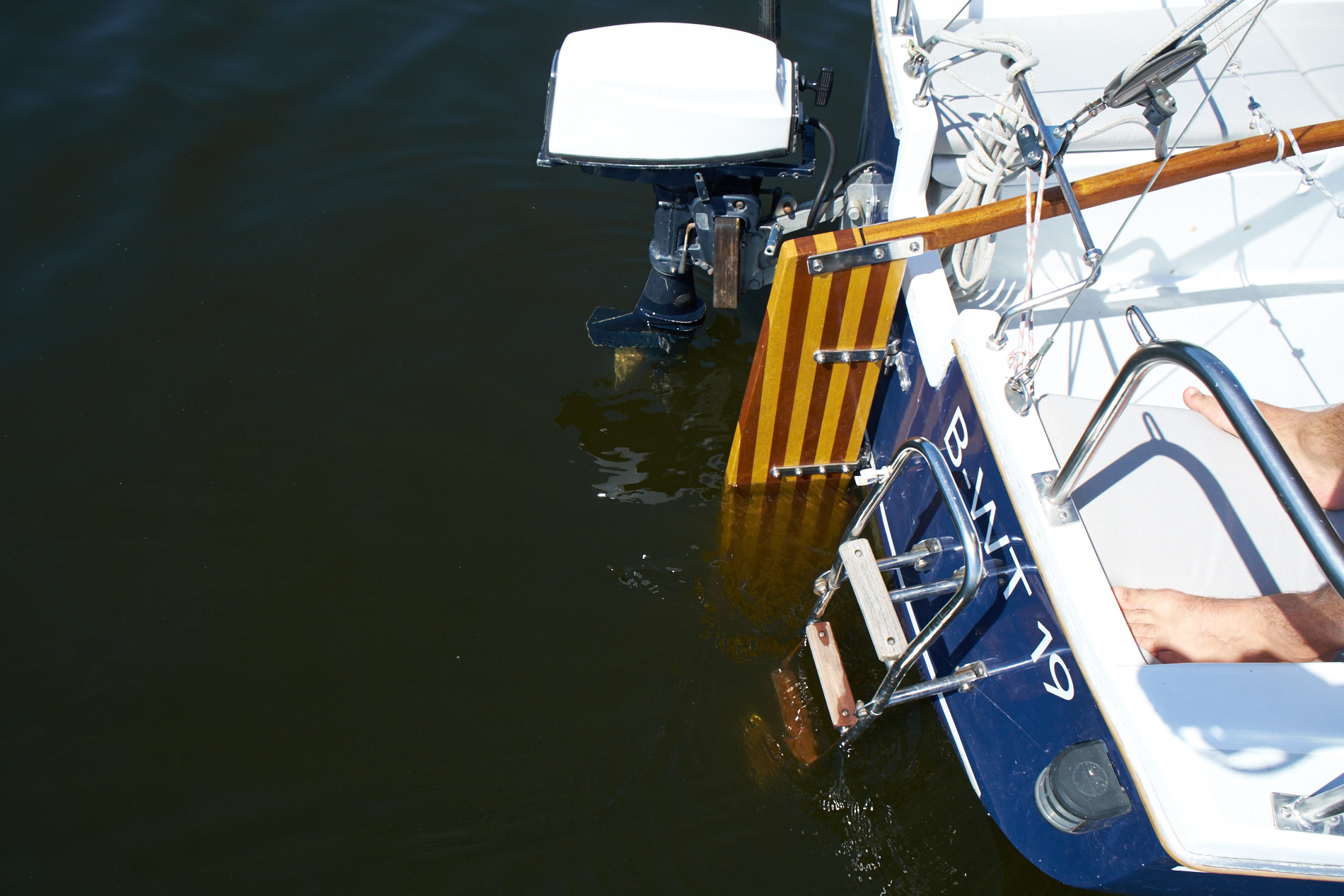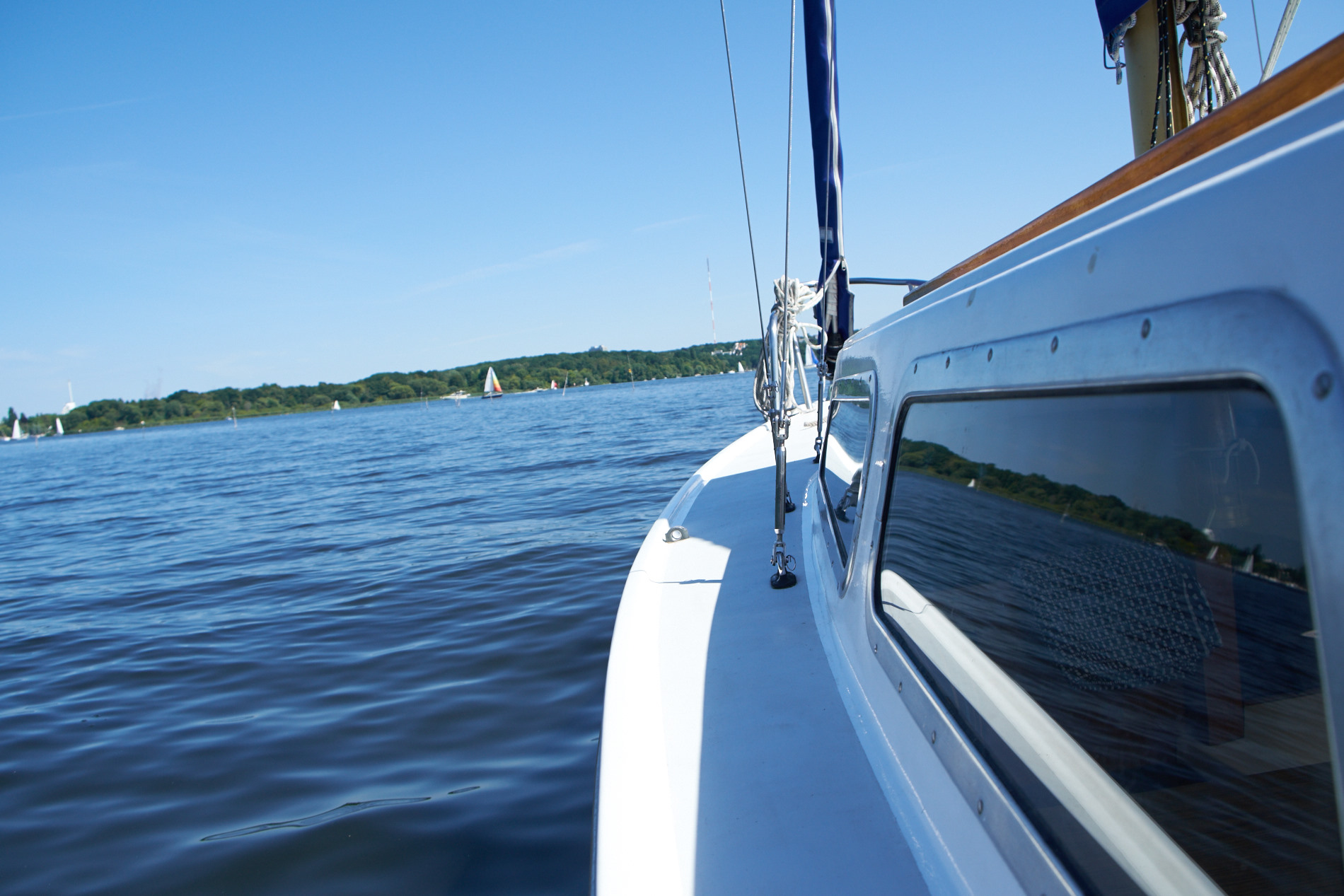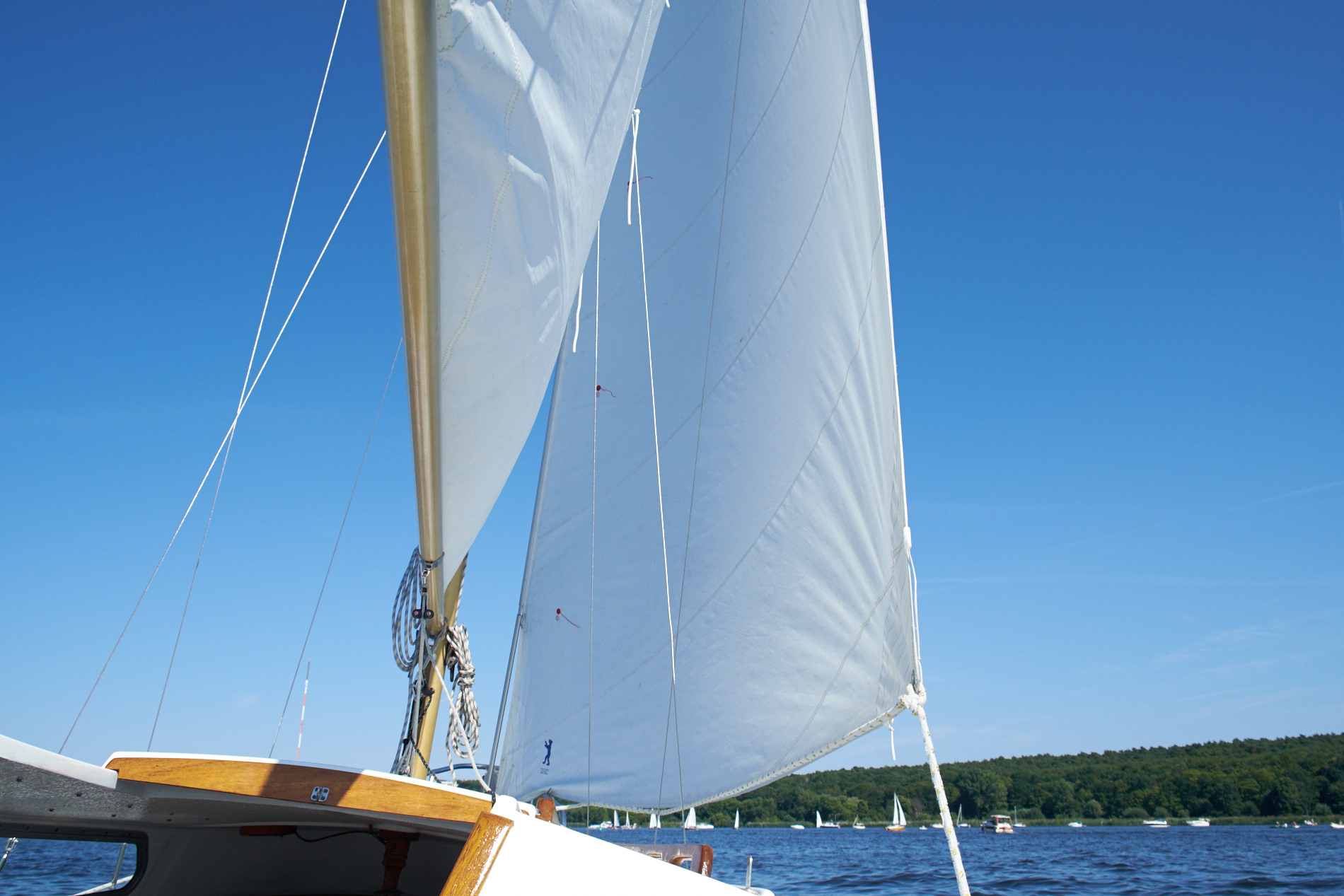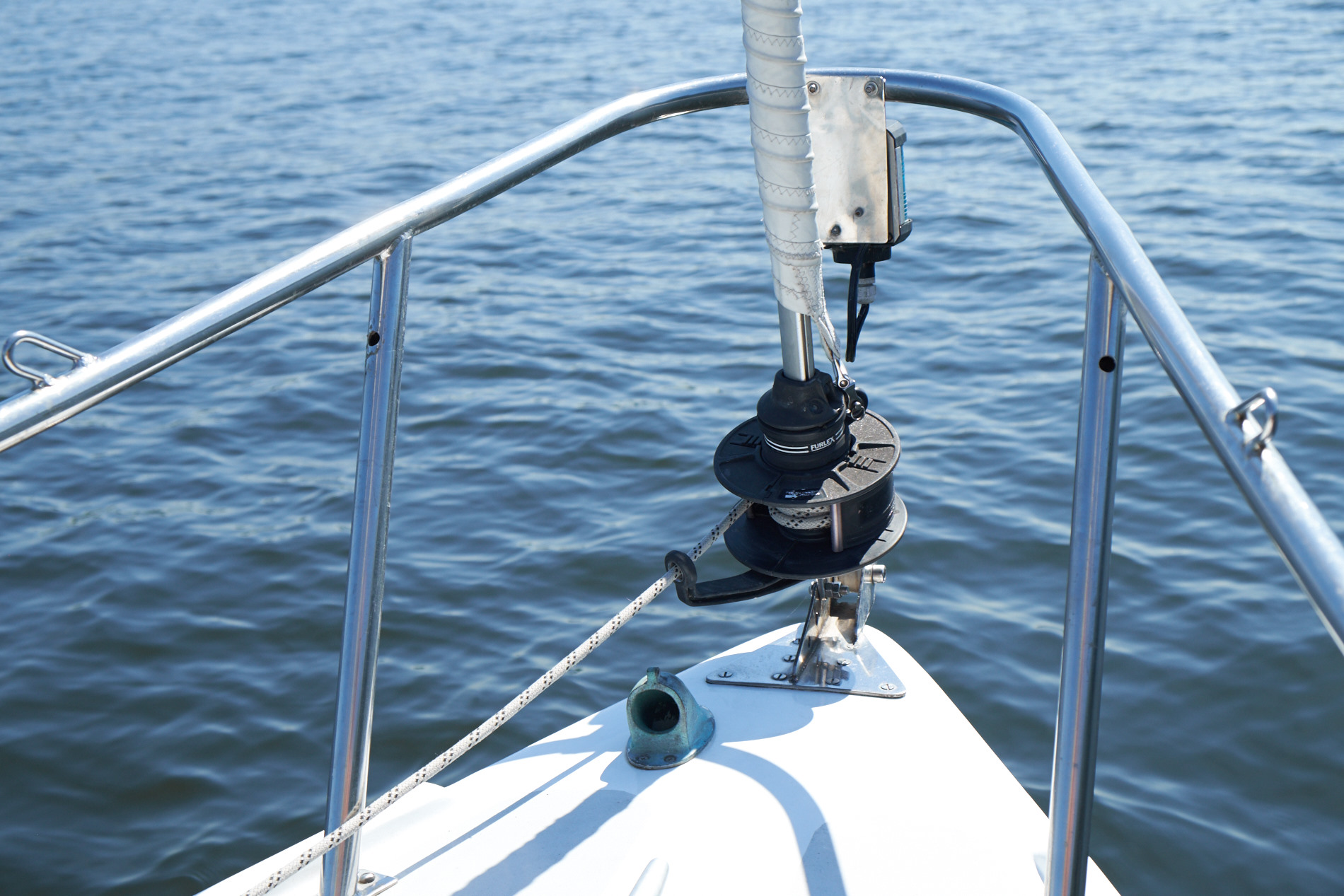The fun side of becoming a sailor?
Is definitely dreaming. The dreaming of me as the owner of a Yacht for example. Or a quiet moonshine-mooring at anchor in a distant bay. Maybe myself hiding behind the sprayhood while riding on freakwaves through Beaufort 7 in the midst of a Skaggerak-Low. Well, whatever your more picturesque visions have been, choosing a boat from the great variety of Websites, Magazines and Apps is a passion I would guess almost all of us have experienced the one or the other way.
Dreaming of the own Yacht is a topic that dominates my thoughts for almost 16 weeks now. And still it´s a lot of fun. But how to make these dreams come true? Every owner I know has had his own strategy. Here is mine.
I became addicted to the Boat24.com app. It´s a convenient and fast widget, searching the latest boat-offers (growing on an almost daily basis) made easy and fun. Really cool: There was a “favourites”-option. Every Yacht appealing to me could be saved into this private section in just one easy click. The app then displayed my personal “Top of the Pops” on side by side – I could then very easily get an overview over my fleet of dreams. I took this great function and combined it with an application I know from car-websites: Here you can for example compare different engine-types by showing their main features in one single chart that visualizes them. Horsepower, fuel-efficiency and so on. Just by one look.
So I´ve made my own comparison tableau: I build a simple Excel-Sheet. Left column the Names of the Boats and the links to the offers in the internet and on the x-axis the features which are most important to me. Length over all, the price of course, number of berths/cabins, type of helm (Tiller or wheel steering), year built and the port of availability. If I´d had the capabilities – which I didn´t had – I could have easily have opted in some pivot-features to sort the Boats per category. Anyway: This Sheet provided an excellent oversight even without this sorting feature.
But still: I regularly ended up losing myself endlessly browsing even eBay for “most Boat for least money”.

So, if you consider buying a used Yacht, ask yourself one question: What is important for me? Here – you guess it – another Excel-Sheet provided useful help. I brainstormed occasionally and noted all the thoughts that came into my mind when I thought of what would be the most important things for me and my new Boat. Things like “Going round Cape Hoorn” or “Making the Northeast-Passage” quickly ended up at the lower part of the Sheet – being clearly dreams that my new Boat (while still my old life) would certainly not being able to fulfill. But others went up quickly.
Such as “Spending time with my family both on deck and in the saloon”, “Gentle sailing-behaviour because of small children onboard”, “one-hand sailing qualities” or “reliable engine”. But also topics like “I want to refurbish (the whole) interior by myself” or “no frills” (of course) made it onto the list.
Having finished my Top 10, thoroughly thought through, I approached my wife to discuss her main thoughts. Since she is my better half and will also have to spend many man hours, days and whole holidays onboard it was really important to collect her views on how our new Boat should be as well. We talked about every issue and began to shift our thoughts in priority: And thus generated a bigger picture . The now completed list helped me later to better sort out Boats which could live up to our minimum demand. I am convinced, such a technique will help you as well to get a clear shape or profile of your boat. Prioritize that list in one final step, because you will hardly find a Yacht that will have all of your expectations satisfied.
And then: Search. Search. Search. I did my Research in the beginning almost entirely internet-based. I assume as a beginner, you will be doing the same. It´s a good and convenient way to get yourself clear and above all to gain good overview over the market, current prices and dynamics.
Considering a purchase: New & fresh from the slip or second hand yacht?
I am, I would say, a normal “middle class”-guy. I´ve got a relatively well paid and (knock on wood!) safe job. Still, we do not have plenty of money to throw around, especially since raising a child in Germany (as anywhere in the world I would guess) is not a cheap matter. But a steady income and some spare money to spend is definitely a good start.
While browsing the high-glossy magazines, sales brochures and 360-degree websites of all the nice state-of-the-art models is very tempting and fascinating, checking the attached price tags for new Yachts is more or less depressing.
So, the first decision is likely to be one of against a new Boat. Why? We are starters. Rookies and absolute beginners. To go and have an appointment with a yacht-broker to buy a brand new Yacht would be like buying a new Porsche 911 GT right after having accomplished to get a driver´s license. My first car was a 15 year old used VW Polo. So, rather than being the son of an oligarch, I do only have a small budget and no experience on the water. Clearly: I´ll go for second hand!

What I learned from reading various books about purchasing a Yacht is one thing: Buy big – or buy twice. Most of the pierside-chat between Skippers is about the next Boat. The next bigger Boat. It seems that most of the owners have opted for the best equipped Ship – thus mostly sacrificing size. But while you can easily replace an old Rigg, a moldy Sail, a missing Plotter or a fancy microwave-oven budget-gently step by step – you will definitely not be able to replace missing size in an other way than buying a bigger Boat. So when talking about “my” Yacht, size was number one on the list.
What a nice coincidence.
But then things came other than expected. A long friend of mine, Jan, called me and said “You have been talking quite a time of buying a Boat I remember? Yes? Well, I am selling my BERTA … and before taking the ad to the net, you have purchase-option.” Wow, what an coincidence, I thought and felt honoured. Jan is a very close friend and certainly a person I trust. So all the stuff related to second hand-purchase like fraud, hidden faults or overpricing would be out of question. (By the way: You can safely expect that from a professional broker with a certain reputation too, because a ruined name will easily be a ruined business very quickly).
“Why do you sell?”, I asked, knowing that Jan loved his boat and had invested a lot of money, personal labour and time in BERTA. Guess what. “I need a bigger Boat.” Allright, sounds familiar. Instantly more interested in his buying-strategy, I asked him to tell me more. Well, Jan buys Danish. Most Danish people own a boat, I guess, it´s a kind of Scandinavian thing. Sailing is far more common in those countries than in Germany. And of course a more “proletarian” thing too, which I find very refreshing. I hate this showing off-mentality. So, knowing that there is a great number of Boats around in Denmark, Jan specialized in searching exclusively Danish Websites for Yacht-Ads. And so he finally found his Boat.
When I asked him, why he didn´t got a bigger Boat in the first place, his answer was astonishing: “Well, my credo is Buy small, buy often, buy bigger step by step.” Well, that´s definitely also a way to a Boat.
Jans most important hints.
SY BERTA – a Catalina Jaguar 22 Daysailer.
I know of BERTA since 3 years. Jan sold his Racebike – a nice Bianchi – to get a ground stock of money for her. He bought her and since then spent a lot of fun time on the waters around Berlin, where he lives. He even one day showed me some pictures of a multi-day trip to the polish baltic in his cute little boat. BERTA is an american built Catalina boat. The Jaguar 22 is described by to be an easy to handle perfect daysailer. “It has a huge cockpit that will accomodate up to 6 people easily and will follow all her masters orders willingly”, he tells me as we talk. Because this type is well spread – even in Europe – there is a huge community of Jag 22-owners. Have a question? Just post it on the internet and people will help you out. Even original and well-maintained spare parts will be no problem, he told me further, because of that huge community. “It´s really a seaworthy little boat”, Jan concludes – a proud owner, indeed.
Well, her contras. As with all the boats he knows so far, windows is a problem. “They´re always leaking, no matter what you do, really”, he tells with a sigh. And of course, as glass reinforces plastic gets older, it will get softer as well: “Look for softened GRP when buying a used boat”, is his clear advice. Small budget and well maintained? His Jag 22 BERTA could be the solution for me. Really?

In the end it was a very tempting offer indeed: Since the Boat is older than 30 years Jan knew he couldn´t demand for any cash on the hull and rig itself. GFK-molded hulls lose in value over the years. If not refitted, a seller can hardly expect to gain anything on the hull after 30 years. A refit can prolong a GFK-hull´s life, but moneywise on a very low level. Even very well maintained Yacht of high brands such as Hallberg-Rassy cannot score high prices.
Even worse: Technical Equipment. Expect it to lose all value at all after 5 to 7 years. Batteries can be written off after 3 years. On the other hand: A well maintained Diesel can even live longer as the Boat´s hull and is therefore the most stable store of value.
So Jan´s equation for the near 40-year old Boat was simply trying to re-finance the investments he made in the Boat over his years as owner – 4.000 Euros. “Her” value as a Boat was thus nearly zero.
But anyway: BERTA – though being a nice little cosy Daysailer – couldn´t really match any of our requirements so I had to kindly refuse his generous offer. BERTA simply is too small for us. As a category C-Boat to unsafe for sailing on the Baltic and with no separate cabin at all no home for a family. By the way: If it attracts you, don´t hesitate to contact Jan. (Mention No-Frills-Sailing.com for a discount. Well, at least try …)
Some hints when reviewing a second hand yacht.
Getting started: Do you have an eye for the Boat? Jan suggests to look at as many boats as you can: “You will get an impression of what is important to you – especially the interior-side of the buy.” Since I have reviewed three boats so far, I can really support this claim. Just by seeing the boat many answers will open up in front of the willing buyer automatically. Cross-examine your favourites.
Be aware of the follow-up costs. Remember me talking of having size as number one post on my wishlist? Well, that´s really a double-edged sword. While 35 foot are certainly more comfy than 27, the follow-up costs are staggeringly growing too. The standard demurrage in an average Marina in Germany would be around 1 to 1,50 Euros per Meter (often even more). So there is definitely a bigger tag on a bigger Boat: Having to stay pierside for three days whilst a storm-low will cost roughly 10 to 15 Euros on a 27-footer, 20 to 25 Euros on the big ones.
Mooring at the home port of registry during summer season will lighten your purse off around 600 Euros – or some 1.500 Euros when you own a big one. Not to mention winter storage, maintenance or a new antifoul. So, it´s true: A bigger boat is a better boat to live on, it´s definitely a weighing up between comfort (size) and costs.
Last but not least – a bigger boat often need more hands to sail it safely.

Look at many boats. Don´t grab the first one you like. One, because professional broker can sense your attachment and will exploit it. Stay cool, consider two or three buys, it will automatically make you immune to selling their techniques and your own crave to eventually get an own Yacht. Also, looking at many boats will sharpen your senses for the topic. More and more experience will make you appear more professional and your questions will shift from “Where is the Bowline knot?” to “What about the standing gut – is it stainless?”
Look at “the one” boat many times. And the current owner. If you have determined which Boat could really make it, don´t bother to ask for two or more occasions to look at it. Take your time to have a second and even a third look. Remember: You are going to invest a lot of money. Even if the buying price won´t be that high, there will quickly be some follow-up price tags. So go for another round though the interior. Take a light with you to inspect the engine-foundations more closely the second time and even ask a – profound sailor preferred – friend to accompany you and ask for his opinion on the Boat.
Test-sailing or discount? By the book would be a test-ride on the boat. You will never get a better and more detailed picture of how the boat behaves than seeing it sail. Look at how the rigg performes, how the toilet works or the engine roars while taking the Yacht to the water. No problem if your Boat of choice is already mooring pierside. When on dry, craning costs will be usually split up between seller and buyer.
Remember to be clear that whilst sailing the owner will function as Skipper: You are only a visitor. (Which has the advantage that you can watch the current owner how he treats the Boat. This will make you be able to get an impression of how he was handling the Boat during the years.) Of course: When on land, craning costs can fast sum up to 300 Euros. Well spent? Of course. But another choice could be not to opt for a test-ride and instead ask for a discount: With an “I´ll take it without any further hazzle” you can demand some chunks to be cut off the price. But this is Vabanque and I would only do that with Rookie-Yachts of up to 15.000 Euros. More expensive Boats should always be tested in and out of the water.
Hull: Top 5 Spots for close-examination. If the Boat will be taken out of the water look at it while drying. If there remain dark (humid) spots on the surface or even drops or spills of water coming out – leakage! Look for tiny hair cracks because they are the beginning of future trouble. Search for signs of ramming, look very close to the keel and the rudder. Saildrive, Shaft-Drive? Anyway: Look for a thorough solid fit and non-damaged blades of the propeller. Antifoul thin or almost scratched off? Calculate a new antifoul and this can be taken off the seller´s price.
Engine and Rigg: Don´t forget. A bad sign is a warm engine when you have your date. That can mean that the seller was touring the engine warm to simulate a sporty-start. But a good engine-demonstration happens with a cold Diesel. The engine is oily, filthy and moldy? Poor maintenance – alarm bells! Same for the rigg: Ropes and steel-lines, fittings and any masts should be without rust and fringe, otherwise take off the costs for a new rigg. Remember: An engine that won´t start is a potential life-risk for you, your guests, your family and others. Don´t play with safety! Also the rigg: A breaking cable, a demastation or even a lost sail can cause very severe situations – so don´t listen to any appeasement.

“Pütt und Pann” – worth the money? While all the stuff on board like charts, fenders, nets, pans, lights, carpets or all the other things can be of great (mostly emotional) value for the seller, it won´t have that much value for you since you will normally empty all the Boat after the purchase to get your stuff onboard. Mostly the great lists by the sellers look big, but in the end all that stuff can only account for a very small fraction of the seller´s price. Try to persuade him to take everything off board after selling since you are not interested: You will be surprised how quickly he will drop his demands.
Don´t rush. And don´t attach too emotionally. Finally, that’s the best advice. Even if you feel – no, if you know to the deepest core of your innermost – that the offered Yacht is the perfect Boat, that the offered price is made just especially for you and for a short timeframe available. Do not hasten. The used boat-market has been full of Boats before your decision to move in and it will be full of Boats ever more after you bought yours. So even if “your” Yacht will be sold to another, faster or richer bidder, don´t you cry. Be sure that there is one Hallberg-Rassy 29 ready for sale anytime soon. Your Rassy.
So we say bye, bye BERTA. May you soon find a young rookie-couple keen on inshore daysailing. They will have much fun with you. Jan made his choice: A Bianca 27 in Copenhagen. He flew in twice. Opted to let her remain in the water (with a buy-back insurance after a possible osmosis-detection back in Germany). And the best of all: I will be onboard when he will sail her to her new homewaters.
More on his new Bianca 27, my own progress in buying a Yacht and of course a griping Cruise Report of my very first Baltic crossing on a sailing vessel coming soon.
What are your experiences with buying a used Boat? Which techniques did help you to sort out the right choice for you and which hints would you give to any future buyer? Feel free to leave a comment.
